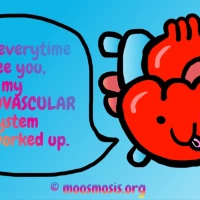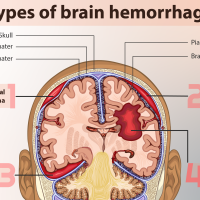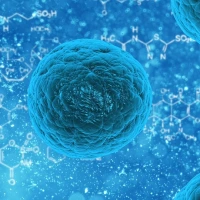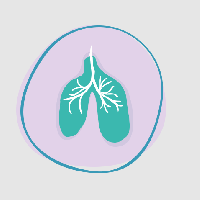In this quick, easy lesson, we learn about hypertension, also known as high blood pressure, for USMLE and medicine. Hypertension is defined numerically as >140/90 and more recently as >130/80.
Primary Hypertension vs Secondary Hypertension
90% cases of hypertension is primary. Primary hypertension means that the cause of hypertension is not clear.
10% cases of hypertension is secondary, meaning that hypertension is a result of another underlying condition or medical problem, like chronic kidney disease.
Risk Factors of Hypertension
Risk factors of hypertension include a family history of hypertension, high salt intake, obesity, alcohol, and physical inactivity. African Americans also have a higher risk for hypertension due to genetics.
Risk of Hypertension By Race: African Americans > Hispanics > Caucasians/Whites > Asians
Sodium and Hypertension: Why is too much salt bad for you?
Too much salt is bad for our health, but why? Let’s learn about the role high sodium plays on hypertension.

Salt and Hypertension Mechanism
High sodium intake –> Higher P osmolarity –> Increases ADH –> Increases Water retention –> [Na] Sodium concentration in blood stabilizes at 140 meq/L
When water retention increases –> Higher ECV (Effective Circulating Volume) –> Increases Blood Pressure
Hypertension Effects
Atherosclerosis: lipid plaques develop in blood vessels
‘athero’ and ‘sclerosis’ –> vessels harden because of plaque buildup
Remember, that sclerosis means hardening of the walls, athero refers to arterial or vessels, and arterio refers to arteries directly.
Arteriosclerosis: Thickening of the arteries’ walls
‘aterio’ and ‘sclerosis” –> artery hardens because the walls thicken
1. Hyaline arteriosclerosis
Glassy appearing
Thickening of small arteries because of protein leakage of vessel wall because of hypertension.
Seen with aging, common with diabetes
2. Hyperplastic arteriosclerosis
Onion skin
Occurs when hypertension = severe (>120 DBP)
Malignant hypertension; blood pressure is so high that basement membranes replicate, which is hyperplasia
Can cause problems like retinal hemorrahges, exudates, or papilledema. Blood vessels can lead to ischemia.
3. Arteriolar Rarefaction
Lose arterioles. Because of hypertension, arterioles close off and get resorbed (gradual breakdown).

Hypertension Increases Pulse Pressure and Afterload.
Pulse Pressure and Hypertension
Pulse pressure increases with hypertension. Both systolic and diastolic pressure can increase. Difference between the two numbers increases because the arteries’ compliance decreases. Arteries become more stiff.
If arteries are distensible, that means the vessels are more flexible and can stretch. Blood is not as tightly packed together, so blood pressure is not as high. However, for stiff vessels, blood is tightly packed together, leading to hypertension.
Afterload and Hypertension
Afterload also increases because of hypertension. Lots of pressure on left ventricle, so left ventricle hypertrophies. On the EKG, you can see a large voltage in QRS segment.
Hypertensive Urgency vs Hypertensive Emergency
Difference between Hypertensive Urgency and Hypertensive Emergency
Hypertensive Urgency = severe hypertension but NO damage on organs yet >180/120
Hypertensive Emergency = severe hypertension WITH end-organ damage. That’s why it’s an emergency. Damaged organs include kidneys and brain, including renal impairment and neurological impairment. Cardiac ischemia can also develop. Rarely, microangiopathic hemolyic anemia MAHA is associated with hypertensive emergency. This is caused by endothelial injury leading to thrombus formation.
Malignant Hypertension is a rare, fatal form of hypertension. Blood pressure is severely elevated (>120 mmHg for distolic). Patients typically die because of rapid deterioration, renal failure, retinal hemorrhage, and ischemia.
Click and check out these popular articles for more information: 🙂
Circulatory System: Blood Flow Pathway Through the Heart
Circulatory System: Heart Structures and Functions
Ductus Arteriosus Vs Ductus Venosus Vs Foramen Ovale: Fetal Heart Circulation
Cardiac Arrhythmias: Definition, Types, Symptoms, and Prevention
Upper Vs Lower Respiratory System: Upper vs Lower Respiratory Tract Infections
Seven General Functions of the Respiratory System
Digestive System Anatomy: Diagram, Organs, Structures, and Functions
Kidney Embryology & Development: Easy Lesson
Psychology 101: Crowd Psychology and The Theory of Gustave Le Bon
Copyright © 2022 Moosmosis Organization: All Rights Reserved
All rights reserved. This essay first published on moosmosis.org or any portion thereof may not be reproduced or used in any manner whatsoever
without the express written permission of the publisher at moosmosis.org.

Please Like and Subscribe to our Email List at moosmosis.org, Facebook, Twitter, Youtube to support our open-access youth education initiatives! 🙂














Excellent article! High blood pressure runs in my family so we monitor it annually at the doctors office.
LikeLiked by 2 people
Great essay! My blood pressure has been on the elevated side these days… I should focus more on the healthy eats.
LikeLiked by 2 people
Very helpful thanks
LikeLiked by 1 person
Fantastic article on hypertension
LikeLiked by 1 person
Excellent article on blood pressure
LikeLiked by 2 people
Lovely articles on health and blood pressure!!
LikeLiked by 1 person
Wonderful!
LikeLiked by 1 person
Thank you Martina! 🙂
LikeLike
Wonderfully written!!
LikeLiked by 1 person
Thank you so much, Martina! 🙂 Wishing you and your family great health!
LikeLike